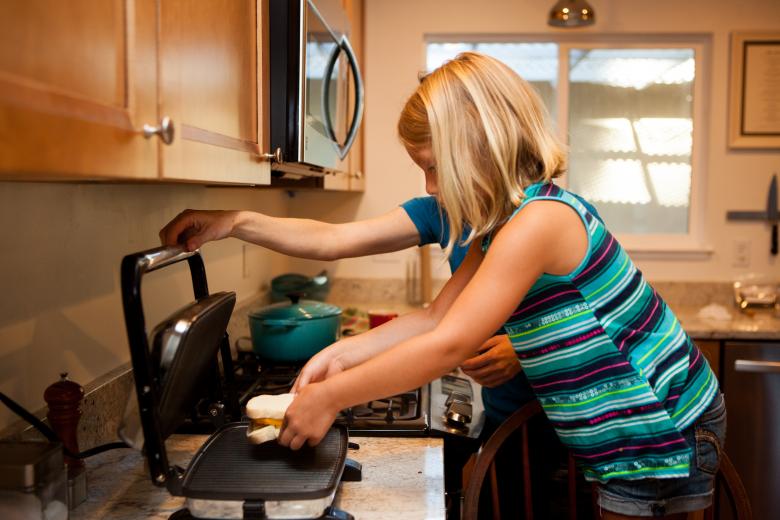Cooking is Fastest Method to Teach Kids to Love Fruits and Vegetables
Amidst a bombardment of TV ads that convince kids to crave calorie dense and nutritionally deficient foods, it can be challenging to raise healthy eaters.
What’s the fastest method to teach kids to love their fruits and vegetables? Gardening? Shopping the farmers market?
New research shows that cooking is the fastest method to improving kids’ food literacy and turning them into food adventurers.
“It’s the collapse of home cooking that led directly to the obesity epidemic,” said food journalist Michael Pollan in a New York Times interview. “Cooking links us to nature, it links us to our bodies.”
Carrie Strohl, a literacy specialist with Learning Design group at UC Berkeley’s Lawrence Hall of Science, said with school or home gardens, few can cook entirely from what they have grown.
Strohl said although school gardening helps children learn how food grows, the garden can become a form of recess, making it difficult to maintain classroom behavior. Also, creating and staging lesson plans to the ripening of fruits or vegetables can be time consuming and difficult for instructors.
“You can’t appeal to the same senses in the garden as you do with cooking,” said Strohl, who has conducted comparative studies on curriculums for both home economics and school gardening. “Meals prepared from scratch are usually healthier and are enjoyed more.”
Cooking builds community around food through a shared culture of eating in far less time than sowing a garden. By sharing the workload of creating a meal, children quickly learn essential skills that will help them to feed themselves someday: following a recipe, chopping, etc.
Pollan suggests that food education in the form of gender-neutral home economics classes would create the potential of a “gender-agnostic cooking culture,” where cooking is a healthy, creative, cost-effective, democratic pleasure.
“Typically students will want to share recipes from school with their family,” Strohl said.
A 2014 Society for Nutrition Education and Behavior study found that a “Cooking With Kids” curriculum involving fourth grade New Mexican children in culinary experiences improved children’s attitudes about cooking, increased self-efficacy (the ability to follow a recipe and create a meal), and boosted preferences towards fruits and vegetables. Thereby, facilitating long-term healthful food choices.
Additionally, the study found that boys with no prior cooking experience had the greatest gains in self-efficacy.
Nutritionists and parents often focus too narrowly on isolating vegetables to fulfill dietary needs. Strohl said a nutritionally balanced meal isn’t one that is nutritionally complete per se. Rather, it is food combinations with a variety of ingredients like garlic, onions, or ginger, which makes food more nutritious, palatable and better to eat. With some foods, cooking makes nutrients more readily available.
A Cornell University study found that children who participate in mealtime activities are 24 percent more likely to eat healthier foods and 12 percent less likely to be overweight.
In her book, “It’s Not about the Broccoli: Three Habits to Teach Your Kids for a Lifetime of Healthy Eating,” Dr. Dina Rose discusses how lessons of proportion, variety and moderation play a crucial role in translating good nutrition into behavior.
Like Strohl, Rose says parents don’t have to obsess about how to get their child to consume particular nutrients. Parents should focus on providing a variety of fresh, wholesome and healthful fruits and vegetables more regularly than junk food at routine mealtimes in modest proportions.
When parents include their children in mealtime preparation and offer a variety of fruits and vegetables from day to day, kids are free to explore and discover what they like, creating emotionally positive eating experiences that will develop into a lifetime of healthy eating habits.
Want to read more stories like this one?
Join the Food Literati and receive the Food Literacy Journal quarterly!
Photo by Marita Madeloni, http://www.madeloniphotography.com/





